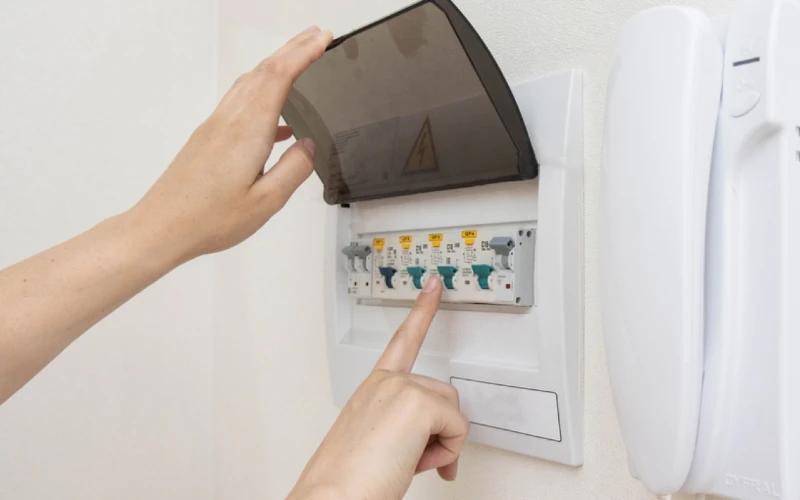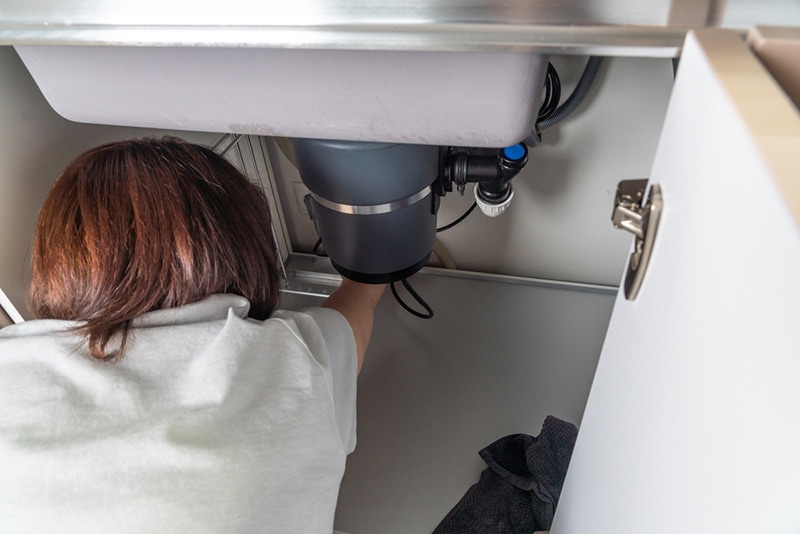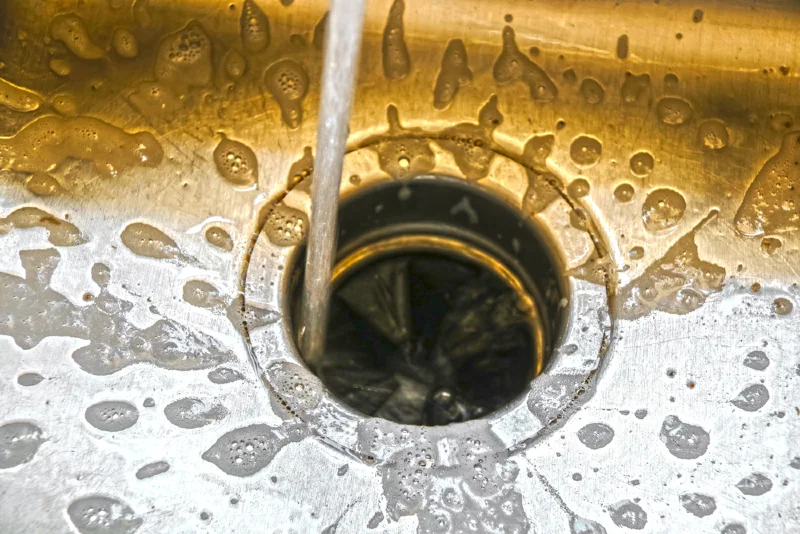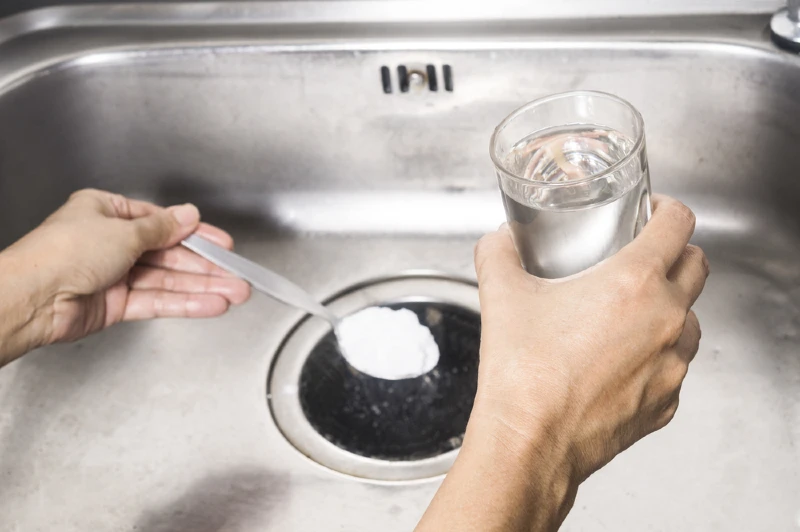How to Reset a Garbage Disposal (5 Tips & Tricks)
-
Pete Ortiz
- Last updated:

If you have a garbage disposal, you know how convenient it can make your life. You can toss all kinds of food scraps down the drain and not worry about blocking your drainage system. But what happens when your garbage disposal stops working? You guessed right. You need to reset it.
You may want to call a plumber, but you can also do the reset yourself as it is simple. This guide will take you through the universal techniques for all kinds of garbage disposals. But first! What is a garbage disposal unit, and what do you need to reset it?
In this article we will cover the following:
- What Is a Garbage Disposal?
- Ways of Resetting a Garbage Disposal
- How to Reset a Garbage Disposal
- When to Call a Professional Plumber
- How to Diagnose a Faulty Garbage Disposal
- Tips When Using Garbage Disposals
What Is a Garbage Disposal?
Garbage disposals are small wastewater treatment units. They make short work of large volumes of food waste. Many homes rely on them to break down the fruit skins and other scraps that can clog the plumbing system.
Usually, they consist of a metal drainpipe with a corrugated sheath shield. The garbage disposal unit has an area that holds water with small feeder tubes leading off it. These tubes provide the water flow necessary for food waste to pass through.
The unit is powered by the kitchen sink’s outlet pipe, often with a wall control switch nearby. Behind this wall control switch is the reset button.
Ways of Resetting a Garbage Disposal
- Pliers
- Flashlight
- Tongs
- Allen wrench
Once you gather the tools, follow the steps below.
How to Reset a Garbage Disposal
1. Turn Off Your Garbage Disposal

Before you try any of the methods below, turn off your garbage disposal first to prevent any accidents from happening while you’re trying to reset the unit. You can turn off the power by pressing the on/off switch near the sink or turning off the circuit breaker1 if it has one. If the circuit breaker regulates all the lights in your house, you need a portable work lamp or a flashlight to see clearly as you work.
2. Inspect for Obstructions

If you’ve tried resetting your garbage disposal and it still isn’t working, it’s time to inspect for obstructions in the drain line. First, ensure there aren’t any visible objects such as strings, pieces of jewelry, large bones, a fork or food stuck inside your drain pipe. These may be obstructing the operation of your garbage disposal unit.
If you see any blockage, remove it using a pair of tongs or long pliers. Even if you have turned the power off, don’t remove the blockage using your hand. Someone else may turn on the power in your house as you work on your garbage disposal without you knowing. Using pliers or tongs is safe.
3. Find the Reset Button on Your Garbage Disposal & Press It

There’s a reset button on most garbage disposals, usually near the bottom of the disposal. You may need to remove the cover to find it. If your unit is old, you may need a plumber or an electrician to locate the reset button and show you how to use it. You can also check the user’s manual if you don’t find it. The location of this button varies from model to model.
The reset button will only work if no power runs through the disposal. So again, turn off the circuit breaker before trying to reset.
Overheating or jamming can trigger the garbage disposal’s safety system, making the reset button pop out. You will push it to reset your garbage disposal. The garbage disposal may still be too hot if the reset button pops out again after pushing it. Let it cool down for around 10 minutes, then try resetting it again.
4. Test the Garbage Disposal

When resetting a garbage disposal unit, you need to test the disposal to ensure it’s working well. Position yourself at the sink’s base so that you can look down into it. Next, run water through your garbage disposal until all food particles are flushed out into the drainpipe below. Once this has been done, turn off the faucet. Then, allow the water to run out into the drain before turning it back on again.
The other thing you can do is turn on the power and put ice cubes through the disposal to help clean out any food particles that may be stuck inside. If the garbage disposal unit doesn’t work after testing it, try resetting it again.
You’ll know it doesn’t work if it generates a noisy hum. In this case, switch it off instantly because it may be jammed.
5. Force Out Jams & Retest Your Garbage Disposal

Switch off the power again before you begin working on it. Your garbage disposal comes with an offset wrench. It’s recommended that you use it.
If you want to dislodge the flywheel, turn the wrench in a clockwise direction. Once you free it, switch the power back on. Run chilly water down the garbage disposal as you flip the switch on and off fast. This way, the flywheel rotates fast. It also helps force out any obstructions. Besides, it stops the garbage disposal from jamming again.
You can also force out jams by pouring baking soda down your drain followed immediately by vinegar or lemon juice. These two substances react together to form sodium acetate. It can break down some types of clogs. You should hear bubbling after about 30 seconds. That means your jam is clear!
When to Call a Professional Plumber
If none of these steps work, call a professional plumber to fix it. They can help you find out what went wrong and fix it fast. Many plumbing companies1 offer 24-hour emergency services. Your plumber can also give you tips on maintaining your disposal well.

How to Diagnose a Faulty Garbage Disposal
It Produces a Humming Sound
When you hear a humming sound coming from your garbage disposal, it means it’s working too hard. Also, it’s struggling to chew up whatever you put into it. It can lead to overheating or even motor failure if left unchecked.
The humming sound may also mean that the garbage disposal blades are malfunctioning. It may be caused by a worn grinder, overheating, or a blocked grinder. All these make the blades not turn. If your garbage disposal is overheating, allow it to cool down.
Water Leak
Do you notice water leaking from under your sink? If yes, check to see if the garbage disposal is leaking and causing damage to the cabinet or flooring beneath it. It’s a common problem with older disposals that haven’t been installed well.
Begin by finding where the leakage is coming from. Water leakage may happen in gaskets, drain lines, cracks, or the reset button. In some cases, the solution can be as simple as tightening a pipe connection or replacing a damaged section of the pipe.

Strange Odors
If you smell strange odors from your sink after using your garbage disposal, chances are the odor is coming from food particles left behind. Clean the pipes and scrub them with bleach and hot water.
Some things you can do to remove this smell include pouring vinegar or bleach down the drain or throwing citrus peels down the garbage disposal. You can also use ice cubes to sharpen the blades.
Inefficient Draining
If your sink isn’t draining well, this could cause problems with your garbage disposal. The water doesn’t flow, so it backs up into the garbage disposal and stops it from working as it’s supposed to. It’s often the result of clogs in your pipes or on the floor below the sink.
If there’s no water coming out of your faucet, check for clogs first. Then, move on to other possibilities that may be causing problems with your garbage disposal.
Tips When Using Garbage Disposals

Garbage disposals allow you to dispose of food scraps and other materials that would otherwise be sent to the landfill. But if you don’t use them well, they can become clogged and eventually break down. Here are some tips for using your garbage disposal well:
- Use the garbage disposal with running water. A garbage disposal needs water to move the food waste through it. If you use a dry garbage disposal, it can clog and stop working. Always run water while using your unit.
- Use cold water. Hot water can soften the food that you put in the disposal, making it stick to the sides of the drain and clog up the pipes. If you want to use hot water, allow it to cool before putting it in the garbage disposal.
- Don’t overload the unit. If you put too much food waste into the sink at one time, it could cause the motor of your garbage disposal to burn out or break down over time. You’ll have to call the plumber and spend money on repairs1. You can avoid this by putting smaller amounts of waste into the garbage disposal! It’s also crucial not to overload other plumbing fixtures such as sinks and showers by putting too much liquid down them at once.
- Keep small silverware and other kitchen items away from the sink leading to your garbage disposal. The drain leading to the garbage disposal is a common place for small silverware, food scraps, and other items to get stuck. When you clean the sink or run water in it, these items can go into the garbage disposal. Keep them away from the kitchen sink to avoid falling into the garbage disposal and destroying its blades.
- Operate your garbage disposal for 30 more seconds after grinding and flushing out the last food item. Running your garbage disposal for about 30 seconds ensures there’s no accumulation, jams, or damage to your garbage disposal. It helps flush out any leftover scraps that might have gotten stuck while using it earlier in dinner prep time. Besides, it allows enough time for all the food particles to reach the drain pipe where they belong!
Conclusion
These days, garbage disposals are a common fixture in kitchens worldwide. They help us dispose of food and other waste materials naturally and hygienically. You don’t have to worry about unpleasant odors. It is a convenience that makes cleanup after dinner easier.
But like most appliances, garbage disposals can develop problems occasionally. When your garbage disposal unit starts malfunctioning, you can try some of the tips in this article before you decide to call for professional help.
See Also:
Featured Image Credit: mariakray, Shutterstock
Contents



